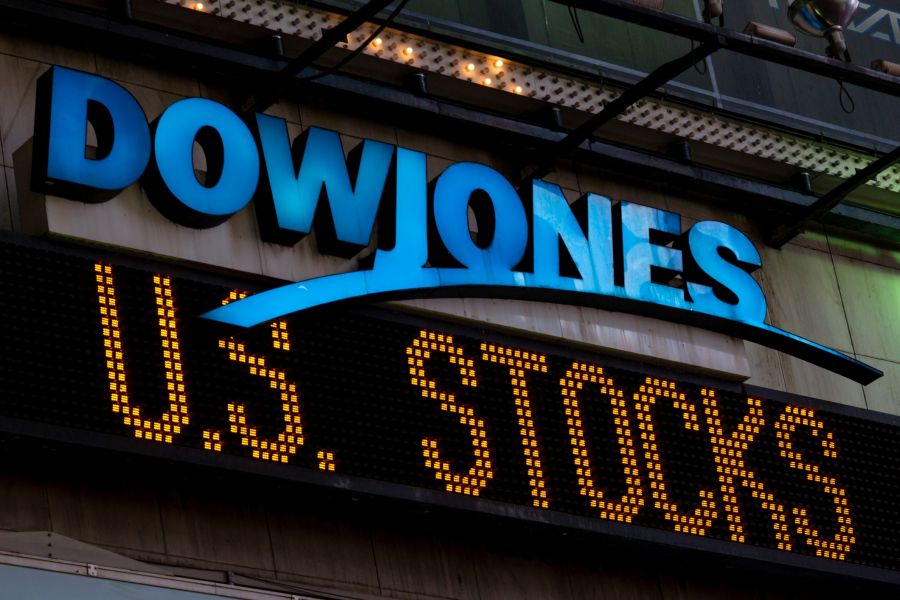
The daily news wouldn’t be complete without coverage of the release and closing of this market index. But you have heard reports about the Dow Jones Industrial Average (DJ).IA) If you are up or down a certain number of points, do you know what those points mean? Read on to learn how the Dow Jones Index works and what changes in the index mean for investors and the stock market.
What is the Dow Jones Industrial Average (DJIA)?
The Dow Jones Average is a stock average calculated by Dow Jones & Company. The average is one of the most commonly used measures of general trends in stock and bond prices in the United States. Dow Jones & Company is a financial news publisher founded by Charles Henry Dow and Edward D. Jones, who began calculating the daily industrial average in 1896 using a list of 12 stocks. And divided their total price by 12. Since then the list of stocks has expanded, and dividends have been adjusted to compensate for stock splits, stock swaps, and wide fluctuations in dividends. Thus, the average is not an arithmetic mean, but an average that represents the general trend of market prices. The most frequently cited is the Dow Jones Industrial Average (DJIA), based on the prices of 30 industrialists. Other Dow Jones averages include the Dow Jones Transportation Average (DJTA), based on 20 transportation stocks, the Dow Jones Utility Average (DJUA), based on 15 utility stocks, and the composite Dow Jones average, which includes DJIA, DJTA, and DJ’s 포함됩니다.UA stocks, and several bonds are averages. Other popular indicators of U.S. stocks include the S&P 500 Index and the Russell 2000 Index.
History of Dow Jones
Dow Jones was founded in 1882 by Charles Dow, Edward Jones and Charles Bergstrupter. Contrary to popular belief, its original index was not published in The Wall Street Journal, but in an afternoon letter from a client. The first industrial average did not include any industrial stocks. The focus at the time was on rising transportation stocks. This means that the first Dow Jones Index included nine railroad stocks, steamships, and telecommunications companies.
This average eventually evolved into a transportation average. By May 26, 1896, the Dow Jones index separated transportation and industry into two different averages, creating what is now known as the Dow Jones Industrial Average.
Charles Dow had a vision of creating a benchmark that could predict overall market conditions and help investors panic at minor changes in the dollar. It was a revolutionary idea at the time, but it was easy to implement. The averages were, well, plain old averages.
Why would a Dow Jones do that?
The Dow Index consists of the 30 largest listed companies in the United States and is one of the most well-known market indicators. Stock indexes such as the Dow are an important substitute for the New York Stock Exchange, and you will often hear them quoted in the nightly news. Stock indices provide a quick insight into overall stock market performance on a daily basis.IA is especially known as the benchmark U.S. blue-chip index.
How to read the Dow Jones Index.
Step 1.
Understand the stocks that make up the DJIA. The DJIA includes stocks of the 30 largest and best-known U.S.-listed companies that provide non-transportable and non-utility goods and services. Because that is the purpose of the DJIA.IA is a measure of the performance of the U.S. economy as a whole, and the definition of these “industries” is intentionally broad. The editors of the WSJ keep a list of these stocks, so the process is somewhat subjective.
Step 2.
Save the DJ. I’ll quote you. Numerous financial Web sites offer stock and index quotes and real-time and delayed quotes. Other companies use other symbols to represent indices: “^DJI” (Yahoo! Financial); “JIND” (E*Trade Financial); “JIA” (TD Ameritrade); “DOU”(money.cnn.com Again, because DJ.IA is not a secure index, and companies may use different “symbols” to track the index in individual systems.
Step 3.
Learn how to read index quotes. Valuations usually show the price (cumulative last transaction price for each of the 30 companies underlying the index), the opening/maximum/minimum/previous closing price, the percentage change in price year over year (since the beginning of the year), quantity (total number of shares sold that day for the 30 companies), and the 52-week price range (high and low).
Step 4.
Compare the individual stocks that underlie the index. There are 30 companies that make up DJ.IA are some of the largest companies in the country. But that doesn’t make them immune to the influence that small and medium-sized businesses have. GM was an integral part of DJJ.It was IA from 1925 until the car company went bankrupt in 2009. Citigroup, which was replaced in 2009, has been a composite company since 1997.
Step 5.
Compare DJJ.IA with different indices. The Standard & Poor’s(S & P) 500, Russell 2000 investment group and Wilshire 5000 are also popular stock market indices. The DJIA tracks 30 stocks, while the Wilshire 5000, as the name implies, tracks 5,000 stocks, so it is considered a general stock market index. The Dow Jones also offers many other indices, such as international and technical indices. No single index gives a complete picture of the market, so be sure to check out the other indices.



GIPHY App Key not set. Please check settings